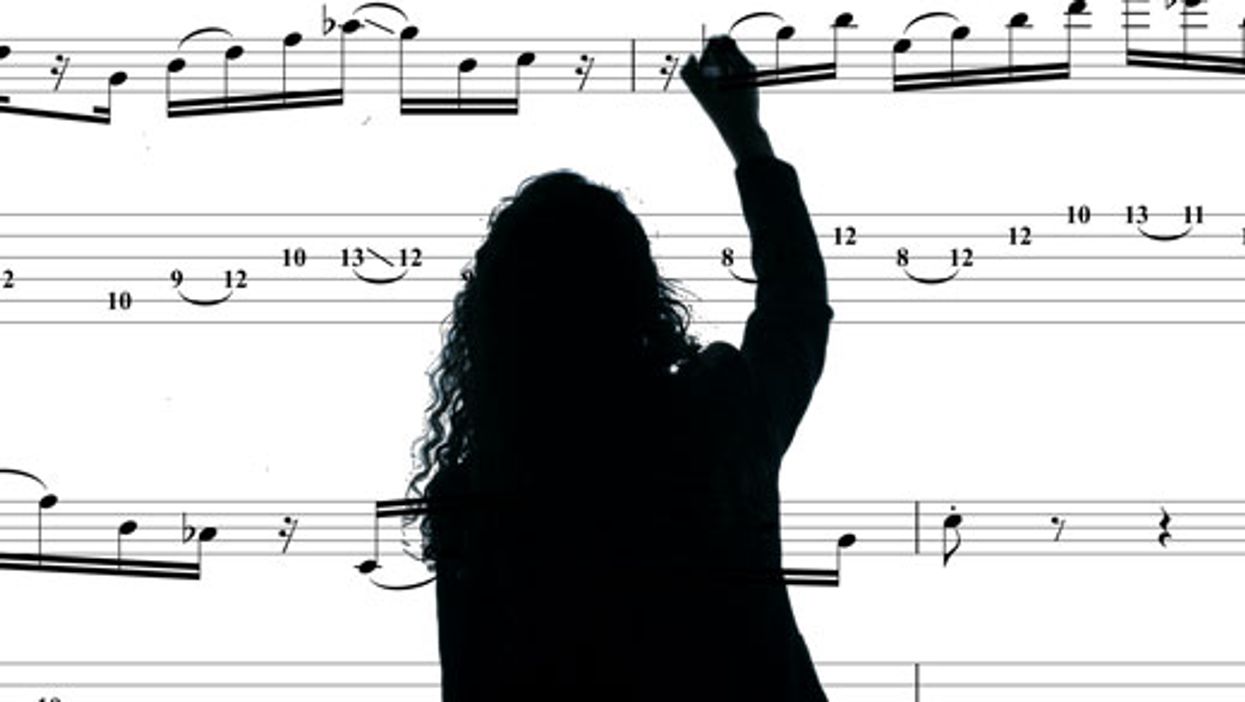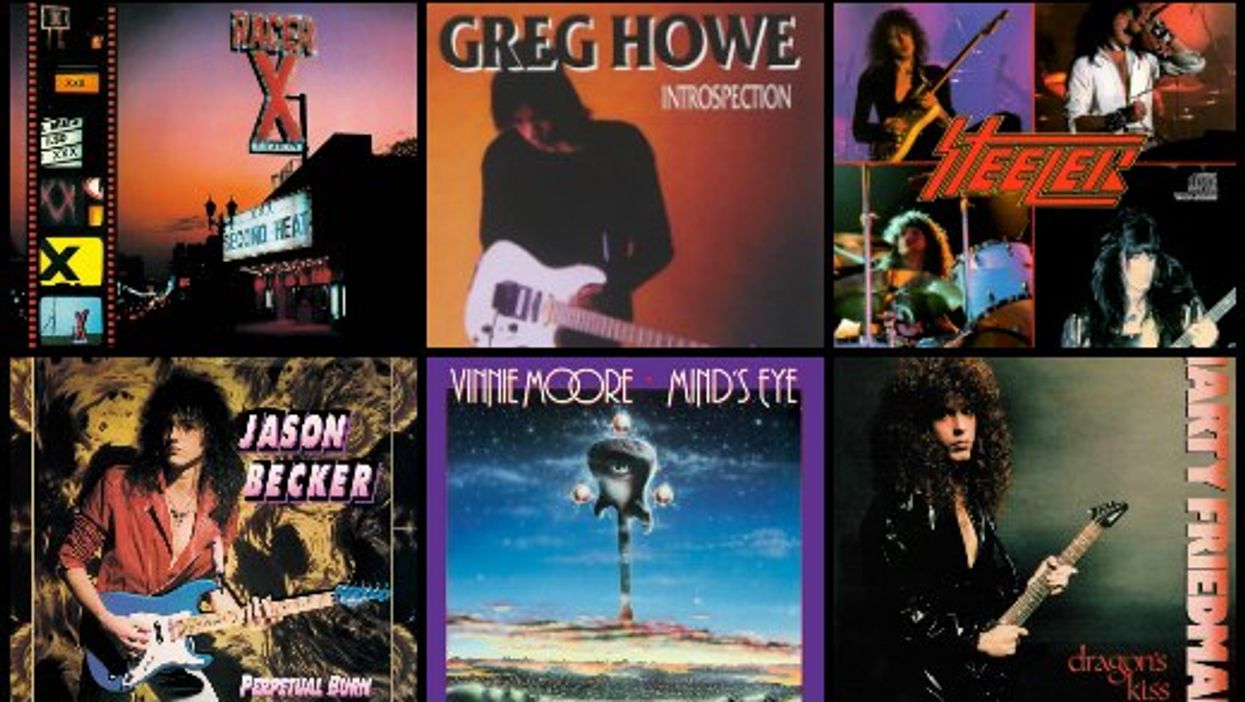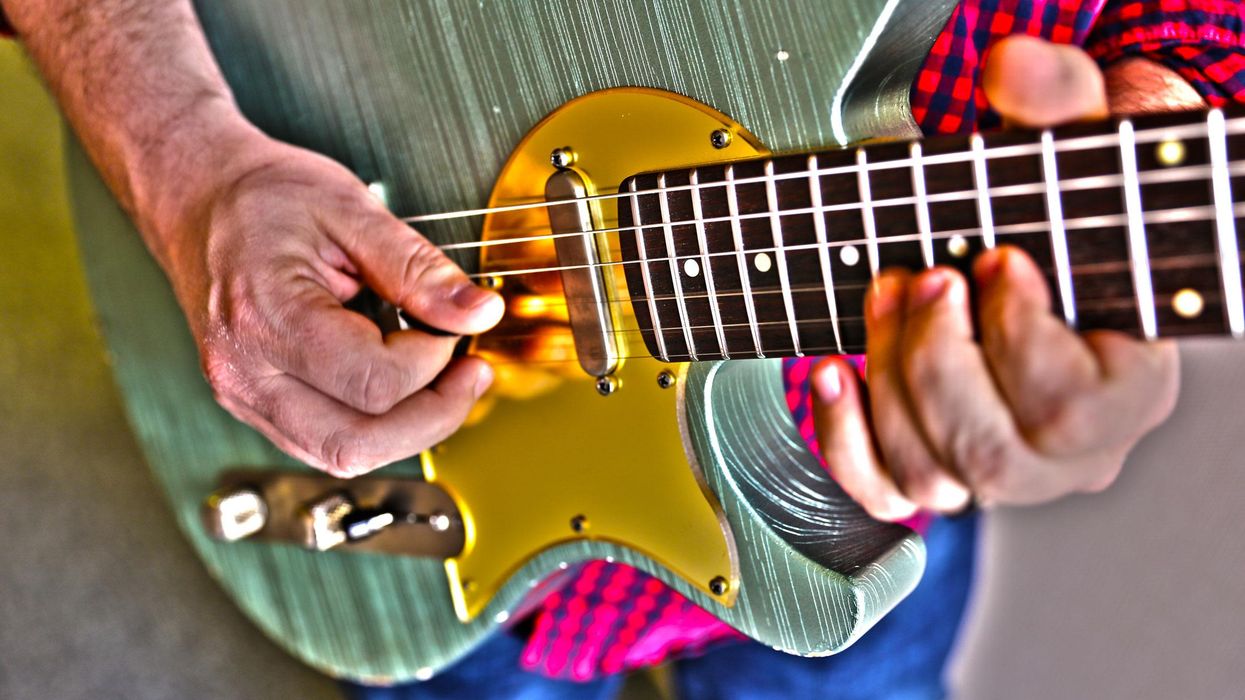Chops: Intermediate Theory: Beginner Lesson Overview: • Synchronize all four fretting fingers with the picking hand. • Improve alternate and economy picking techniques. • Lock in note timing changes between eighth and 16th-notes, triplets, and sextuplets. Click here to download a printable PDF of this lesson's notation. |
While technique exercises are undoubtedly the most boring aspect of playing guitar, they are more often than not what separates professionals from amateurs. Learning songs, writing music, and improvising on the guitar can be much harder than it has to be without a solid foundation. The good news? Working a few minutes of “technique time” into your practice routine can really pay off in a hurry. Here’s a handful of exercises and warmups that will help lock in your left and right hands. It’s important to grab your metronome for these!
Ex. 1 is one of the most common and simple atonal picking exercises. Starting on the 1st fret of the 6th string and using alternate picking, four notes are played ascending chromatically. Replicate this pattern across the 5th, 4th, 3rd, 2nd, and 1st strings, completing a “box” at the 4th fret of the 1st string. Move the box up one fret and play it in reverse (descending) order until you complete the box at the 2nd fret of the 6th string. Continue this pattern of moving the box upwards one fret upon completion until you cover one octave. I know, it’s tedious, dull, and not musical in any way, but if you focus on the accuracy and consistency of the picked notes you will see a drastic improvement of your alternate strokes!
Click here for Ex. 1
Ex. 2 is a variation on the first, but it is a bit more of a brain teaser. Using the same concept of four chromatic notes per string, this variation switches things up by ascending or descending one fret on every string change rather than visualizing a moving block. Work your way across the fretboard from the 6th string to the 1st, then back to the 1st string to complete the ascending section. The descending section follows the same horizontal pattern, with the exercise completing in the same place it started.
Click here for Ex. 2
So far, everything has been eighth-note based. Let’s change that.
Ex. 3 is even more of a brain teaser, and it’s also the last one that’s atonal and only slightly more fun than watching paint dry. Going back to the “box” approach, this exercise assigns a metric subdivision for each string, forcing you to focus on your timing accuracy.
Click here for Ex. 3
That was fun, wasn’t it? Now we’re going to break out of the atonal world and work with three-note-per-string major scales. Ex. 4 will work anywhere on the fretboard with the 1st position major scale, but we’ll use the A major scale (A–B–C#–D–E–F#–G#). You might already practice this form of the major scale in your routine but notice that this exercise uses economy picking. The first nine notes of the ascending section are fretted with the 1st, 2nd, and 3rd fingers, with the last six being fretted with the 1st, 3rd, and 4th fingers. The descending section is played using the same fingering. The focus is not necessarily on the three notes fretted on each string, but rather on the transition between strings. Fluidity and consistency are key!
Click here for Ex. 4
Now, let’s add a variation on that exercise by adding string skipping. Still working horizontally across the fretboard, each section in Ex. 5 can be thought of in two parts: the “starting” group of three notes per string and a corresponding group of three notes located two strings away. The fingering and picking pattern remain the same as in Ex. 4.
Click here for Ex. 5
In Ex. 6 I pull a section of the main guitar part from John Mayer’s “Edge of Desire” not only because is it an insanely catchy lick, but it’s quite the downward picking synchronization workout. Rumor has it that the part came from a warmup John was playing, and it seems to check out based on live videos showing him downward picking the part. Based out of the A and D major scales, the lick is nothing more than a one note per string major 7 arpeggio. The actual part from the song is palm muted, but that tends to hide a lot of picking inconsistency, so I recommend playing it unmuted.
Click here for Ex. 6
The last exercise (Ex. 7) is a descending alternate picked triad pattern taught to me long ago by my first guitar teacher, Justin Patton. By starting with an A minor triad (A–C–E) at the 12th fret on the first three strings, the shape moves down one fret and inverts after every pass. This exercise gets bonus points for doubling as an extremely long outside lick that eventually resolves to A minor.
Click here for Ex. 7
I can’t stress enough the importance of using some form of a time keeper when practicing these workouts. The audio files associated with this lesson have a metronome, but any drum program can work. Incorporate them into your practice routine, and they’ll work wonders for your picking- and fretting-hand synchronization!















